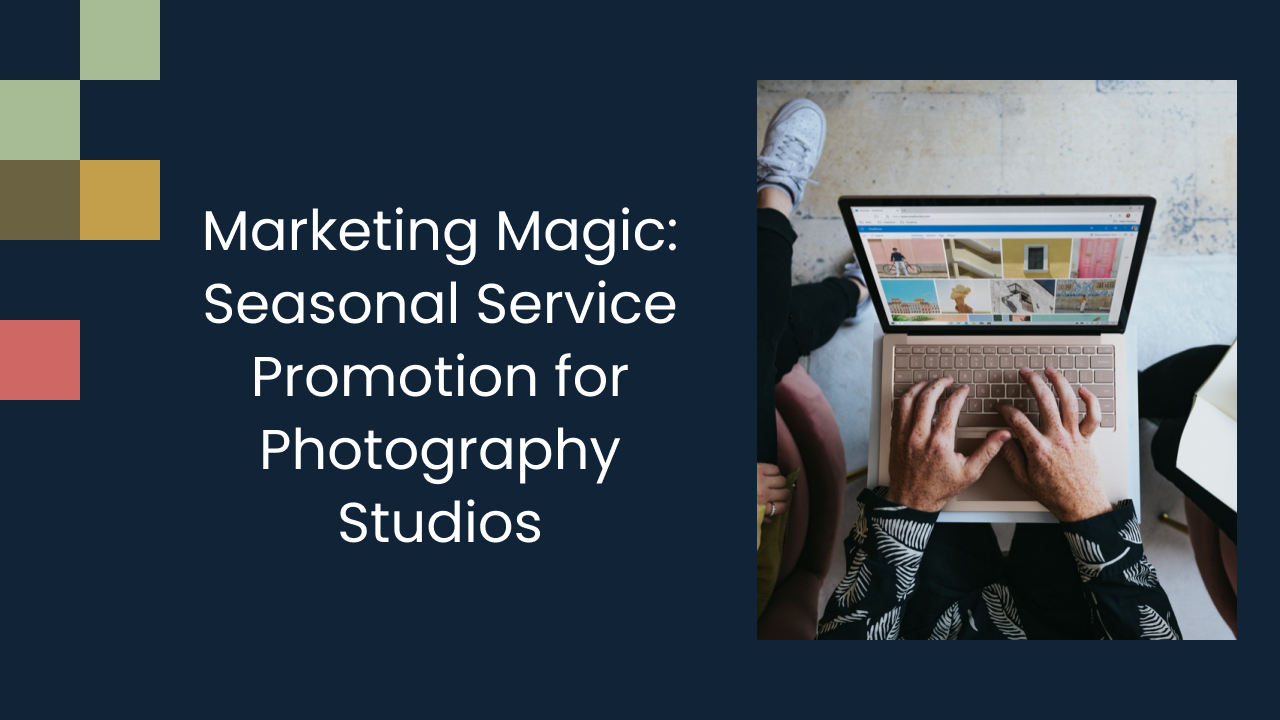Maximizing Profit: Upselling Techniques for Small Photography Studios

In the competitive world of photography business, finding ways to maximize profit is crucial for small studios. One effective strategy that can significantly boost revenue is upselling. Understanding the concept of upselling and implementing it strategically can lead to increased sales and enhanced customer satisfaction. This article will explore the importance of upselling in the photography industry, key principles for effective upselling, identifying potential upselling opportunities, developing a successful upselling strategy, training your team for successful upselling, and measuring the success of your upselling techniques.
Understanding the Concept of Upselling
Upselling involves offering customers additional products or services that complement their original purchase, encouraging them to spend more. It is important to view upselling as a way to provide added value to customers rather than a pushy sales tactic. By understanding the benefits of upselling, photography studios can create a win-win situation for both the business and the customers.
The Importance of Upselling in Photography Business
Upselling is crucial for photography studios as it allows them to generate additional revenue without acquiring new customers. By offering clients products or services that align with their needs and desires, studios can enhance the overall experience while increasing their average sale per customer.
Key Principles of Effective Upselling
When implementing upselling techniques, it is essential to follow some key principles:
- Understand your customers' preferences and needs: By comprehending what your customers value, you can offer relevant upselling options that cater to their interests. For example, if a customer has booked a portrait session, you could suggest adding a professional makeup artist to enhance their look and make them feel even more confident in front of the camera.
- Provide personalized recommendations: Tailor your upselling suggestions to each customer's unique situation. This personal touch can make a significant impact on their purchasing decisions. For instance, if a customer has booked a wedding photography package, you could recommend adding a pre-wedding engagement shoot to capture their love story from different angles.
- Focus on value, not price: Rather than solely emphasizing cost, highlight the value and benefits the additional products or services bring to the customer. Explain how these extras can enhance their overall experience and create lasting memories. By showcasing the value, customers will be more inclined to see the added worth and be willing to invest a little more.
- Offer incentives: Provide incentives, such as exclusive discounts or special promotions, to make the upselling proposition even more appealing to customers. For example, you could offer a discounted rate for a canvas print if a customer decides to upgrade their photography package to include a larger album.
- Maintain transparency: Be open and honest with your customers about the upselling process. Clearly communicate the benefits and options available to them, ensuring they feel informed and empowered to make the best decision for their needs. This transparency can build trust and encourage repeat business.
By following these key principles, photography studios can effectively implement upselling strategies that not only increase revenue but also enhance the overall customer experience. Remember, upselling is about providing added value and helping customers get the most out of their photography session. So, embrace the concept of upselling and create a win-win situation for both your business and your valued clients.
Additionally, it's worth noting that upselling can also lead to positive word-of-mouth referrals. When customers have a great experience and feel that they received exceptional value for their investment, they are more likely to recommend your photography studio to their friends, family, and colleagues. This organic promotion can significantly contribute to the growth and success of your business.
Identifying Potential Upselling Opportunities
To maximize the effectiveness of upselling, photography studios need to identify the right opportunities. Here are two key ways to do so:
Recognizing Client Needs and Wants
By actively listening and engaging with clients, photographers can gain insights into their specific requirements and desires. Understanding clients' goals allows studios to make relevant upselling recommendations that genuinely enhance their experience.
Photographers can go beyond just capturing moments and delve deeper into understanding the emotional significance behind the photos. By building a connection with clients, studios can uncover hidden desires and aspirations, enabling them to offer personalized upselling options that resonate on a profound level.
Utilizing Special Events and Seasons
Special events and seasons present great opportunities to upsell. For example, during wedding season, offering premium album packages or extra photo sessions can be enticing to couples seeking to capture their special day in the best possible way.
Furthermore, tapping into the essence of different seasons can inspire unique upselling ideas. For instance, during the festive holiday season, photographers can offer themed photo shoots or customized greeting cards as add-on services, catering to clients looking to spread joy and capture memories during this celebratory time of the year.
Developing Your Upselling Strategy
To implement effective upselling, it is important to develop a clear strategy that aligns with your studio's goals and target audience. Here are two key components:
Creating Value-Added Packages
Developing value-added packages that bundle together complementary services or upgrade options can entice customers to spend more. Offering incentives like free prints or exclusive editing services within these packages can make them even more appealing.
When creating value-added packages, it's crucial to consider the preferences and buying behaviors of your target audience. Tailoring these packages to cater to specific customer needs and desires can significantly increase their perceived value, making them more likely to make a purchase. Additionally, regularly updating and refreshing these packages with new and seasonal offerings can keep customers engaged and interested in exploring different upselling options.
Pricing Strategies for Upselling
When determining pricing for upselling options, it is essential to strike a balance between profitability and customer perceived value. Conduct market research and consider the competition to ensure your pricing remains competitive while maintaining a healthy profit margin.
Another effective pricing strategy for upselling is tiered pricing, where customers can choose from different levels of upgrades or add-ons based on their budget and needs. By providing a range of options at varying price points, you can appeal to a broader customer base and increase the likelihood of upselling to different segments of your audience. Additionally, offering limited-time promotions or discounts on upselling options can create a sense of urgency and encourage customers to take advantage of these additional services sooner rather than later.
Training Your Team for Successful Upselling
Upselling is not just a responsibility of the business owner; it involves the entire team. Providing training to your staff can ensure everyone understands the importance of upselling and has the necessary skills to achieve success.
When it comes to training your team for upselling, it's essential to delve into the psychology behind customer behavior. Understanding why customers make certain purchasing decisions can empower your team to tailor their upselling techniques effectively.
Communication Skills for Upselling
Effective communication is crucial for upselling. Training your team on active listening, persuasive language, and the art of suggestion can significantly enhance their abilities to upsell without being pushy.
Furthermore, incorporating role-playing exercises into your training sessions can help team members practice their communication skills in a safe environment. By simulating real-life upselling scenarios, employees can gain confidence and refine their approach.
Overcoming Objections and Hesitations
Equip your team with the tools to handle objections and hesitations from customers. This may include providing them with common objections and appropriate responses to overcome objections effectively while maintaining customer satisfaction.
Moreover, teaching your team the importance of empathy in addressing customer concerns can foster trust and loyalty. By putting themselves in the customer's shoes, employees can better understand their perspective and provide tailored solutions that resonate with their needs.
Measuring the Success of Your Upselling Techniques
Monitoring the performance of your upselling strategies is essential to determine their effectiveness and make necessary adjustments. Here are some key performance indicators to consider:
Key Performance Indicators for Upselling
When it comes to measuring the success of your upselling techniques, there are several key performance indicators that can provide valuable insights into the effectiveness of your strategies. One crucial metric to track is the total revenue generated from upselling compared to the total revenue of your business. This comparison can help you gauge the impact of your upselling efforts on your overall sales performance.
Another important KPI is the average sale per customer. By analyzing the average amount spent by each customer as a result of your upselling tactics, you can assess the effectiveness of your upselling techniques in increasing the value of each transaction.
In addition to revenue-related metrics, monitoring the repeat purchase rate can also offer valuable insights into the success of your upselling strategies. A high repeat purchase rate indicates that your upselling techniques are not only driving immediate sales but also fostering customer loyalty and encouraging repeat business.
Lastly, don't overlook the significance of customer satisfaction ratings as a key performance indicator for upselling. Satisfied customers are more likely to engage with your upselling offers and become loyal advocates for your business, ultimately contributing to long-term success.
Adjusting Your Strategy Based on Results
Based on the performance indicators, adapt and refine your upselling strategy as needed. Monitor customer feedback, conduct surveys, and analyze data to identify areas for improvement and capitalize on potential opportunities.
By implementing effective upselling techniques and continuously refining your approach, small photography studios can maximize their profit potential and provide exceptional value to their clients. Embrace upselling as a valuable tool and watch your business thrive.




